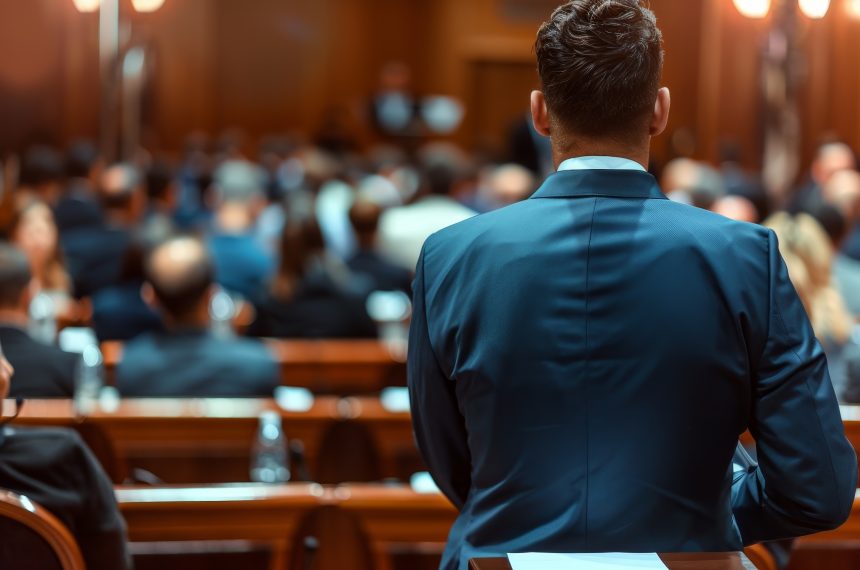Happy To Discuss About Your Requirement? Get a Quote

Heading to court can be daunting, but proper preparation helps you confidently navigate. This article covers the importance of preparation, understanding subpoenas, crafting witness statements and required documents, and the consequences of being unprepared.
It also discusses appropriate attire, behavior, and what to expect during proceedings. This comprehensive guide will help clients prepare for a court appearance.
A court appearance is a legal proceeding during which attorneys, clients, witnesses, and other members of legal teams present their case before a judge or jury. This is a critical part of the judicial process, where evidence is provided, testimonies are given, and legal arguments are made in a formal court setting.
Preparation for a court appearance is essential to ensure all evidence is organized and a compelling narrative is presented to the judge or jury. Meticulous trial preparation, including creating a checklist, is crucial. Failing to prepare can lead to ineffective presentation of critical facts, a negative impression on the judge, and potentially losing the case.
Poor preparation also hinders the ability to counter opposition arguments and may result in being caught off guard or appearing unconvincing. Judges favor well-prepared attorneys who provide a straightforward, coherent narrative, making thorough preparation vital for successfully navigating the legal system.
Preparing for a court appearance requires gathering and organizing various documents, such as depositions, trial briefs, and exhibits, which are crucial for effectively presenting your case.
A subpoena requires a person to testify as a witness or produce evidence under the Federal Rules of Evidence. Ignoring a subpoena carries legal obligations and can result in severe consequences, such as contempt of court, financial sanctions, or jail time.
Recipients must carefully read and comply with the subpoena’s demands within the designated timeframe to avoid penalties or further legal action.
A witness statement is a written account of facts a witness observes, which is crucial for court testimony. It should be clear, accurate, and free of biases. Encouraging detailed and unbiased recall is essential, as discrepancies can impact the case. Organizing the statement logically and chronologically ensures clear communication of events.
Essential documents for trial preparation include subpoenas, witness statements, exhibits, and testimony records. Exhibits are tangible items like documents, photographs, or objects visually supporting arguments.
Testimony records provide detailed accounts of statements made under oath by witnesses, experts, or involved parties, strengthening your legal position during the trial.
Proper dress and behavior in court are crucial for creating a positive impression on the judge, jury, and other courtroom participants, including attorneys and clients. Adhering to courtroom etiquette helps in conveying respect for the judicial process.
Appropriate court attire includes formal clothing to show respect for the court and judge. Men should wear a dark suit, white dress shirt, and conservative tie, ensuring the suit is well-fitted, clean, and pressed.
Women should choose a tailored dress or pantsuit in neutral tones paired with closed-toe shoes and minimal jewelry. Both men and women should focus on cleanliness, grooming, and subtle elegance.
Proper courtroom behavior involves respecting the judge and jury, listening attentively, and avoiding disrespectful or disruptive actions. Address the judge as “Your Honor” or “Judge” and maintain a calm, professional demeanor with all court participants.
Stand when the judge enters or exits, avoid using electronic devices or talking during proceedings, dress appropriately, and follow instructions from the judge or court staff. Observing these guidelines demonstrates good courtroom etiquette and can positively impact your case.
If you don’t understand a question during your testimony, ask for clarification rather than guessing to ensure your response is accurate and truthful. Clear communication is crucial in legal proceedings, and seeking clarification shows your commitment to providing honest information.
Guessing can lead to misunderstandings and damage your credibility. By openly communicating and asking for questions to be rephrased or explained, you demonstrate a commitment to truthfulness and transparency, which are highly valued in court.
During a court appearance, you can expect a structured sequence of events starting from the trial date. Both parties present their arguments, evidence, and witness testimonies before a judge or jury, leading up to a final hearing and decision.
The order of court proceedings typically begins with opening statements, where each party outlines its key arguments and main points. This is followed by presenting evidence, including documents, exhibits, and witness testimonies. Cross-examinations allow the opposing party to question witnesses and challenge their credibility.
After all evidence and testimonies are presented, attorneys give closing arguments to persuade the judge or jury. The judge then reviews all information, listens to arguments, and delivers a verdict in the final hearing, concluding the court proceedings.
Various types of evidence used in court include physical exhibits, documents, and testimonies, all governed by the Federal Rules of Evidence to ensure admissibility and relevance. Physical exhibits, like weapons or DNA samples, provide tangible objects for consideration.
Documents, such as contracts or medical records, present written information supporting claims or defenses and are often authenticated before admission. Testimonies from witnesses, experts, or involved parties offer spoken accounts or professional opinions, with witness credibility and consistency crucial for evaluation.
Possible outcomes of a court appearance include a verdict from the judge or jury, which may favor one party, result in case dismissal, or lead to other legal resolutions. The judge or jury assesses the evidence and testimonies before deciding.
A verdict in favor of one party means that the party has convincingly proven its case. Case dismissal implies insufficient evidence or flawed legal procedures. Other resolutions, such as settlements or appeals, may occur based on case complexity and the parties’ willingness to negotiate.
© 2025, Alpha Law Group